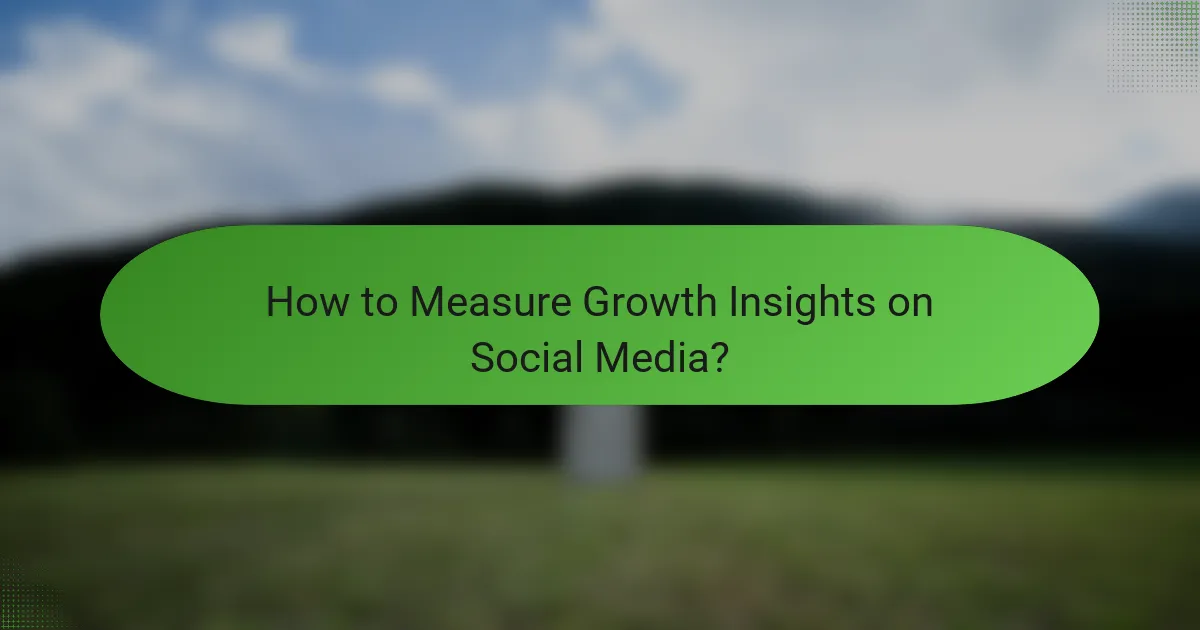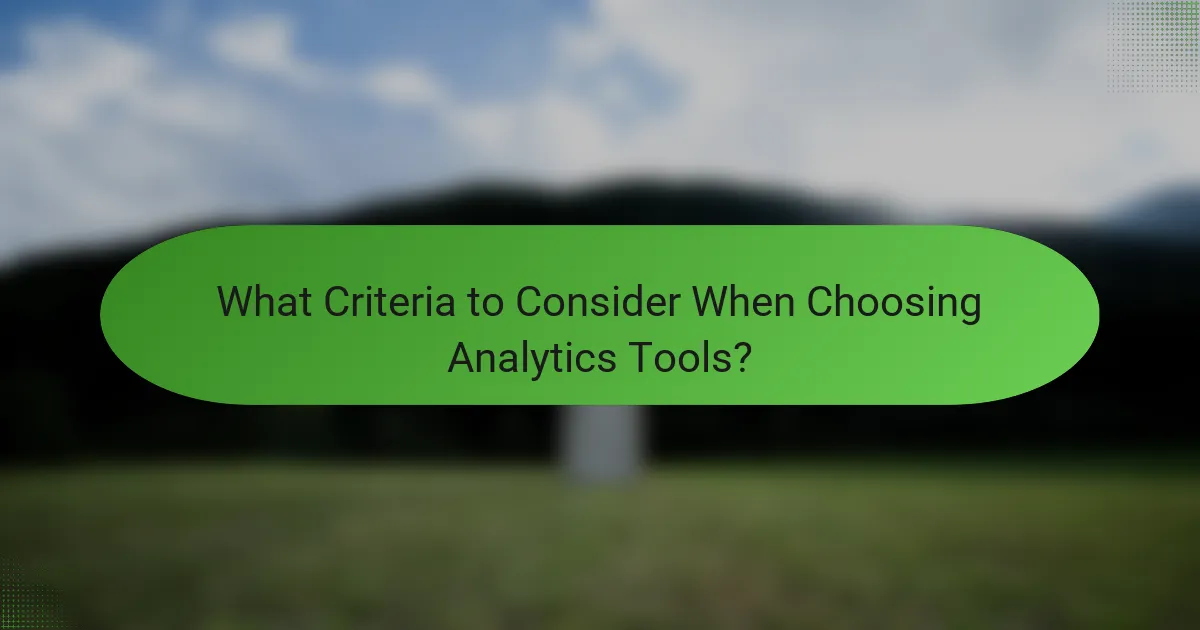Social media metrics are essential for understanding the effectiveness of your content and its ability to engage audiences. By analyzing key indicators such as engagement rates, reach, and conversion rates, you can gain valuable insights into your social media strategy. Tracking user interactions and growth metrics allows you to refine your approach and enhance overall performance.

How to Analyze Social Media Performance Metrics?
Analyzing social media performance metrics involves evaluating various indicators to understand how effectively your content engages audiences and drives growth. Key metrics include engagement rates, reach, impressions, and conversion rates, which collectively provide insights into your social media strategy’s effectiveness.
Key performance indicators (KPIs)
Key performance indicators (KPIs) are essential metrics that help gauge the success of your social media efforts. Common KPIs include engagement rate, which measures interactions relative to total followers, and click-through rate (CTR), indicating how many users click on your links. Tracking these metrics allows you to assess what content resonates with your audience.
Other important KPIs may include follower growth rate, which shows how quickly your audience is expanding, and conversion rate, reflecting how many social media interactions lead to desired actions, such as purchases or sign-ups. Regularly monitoring these KPIs can guide your content strategy and marketing efforts.
Tools for performance analysis
Several tools can assist in analyzing social media performance metrics effectively. Platforms like Google Analytics provide insights into traffic generated from social media, while native analytics tools from Facebook, Instagram, and Twitter offer detailed engagement statistics. These tools help you track performance over time and identify trends.
Additionally, third-party tools such as Hootsuite, Sprout Social, and Buffer can aggregate data from multiple platforms, allowing for comprehensive analysis. These tools often include features for scheduling posts and monitoring engagement, making them valuable for managing social media strategies.
Benchmarking against competitors
Benchmarking against competitors involves comparing your social media performance metrics with those of similar brands in your industry. This process helps identify areas where you excel or need improvement. Look at competitors’ engagement rates, follower counts, and content strategies to gain insights into industry standards.
Tools like SEMrush and BuzzSumo can help you analyze competitor performance and uncover successful tactics. Understanding where you stand relative to competitors can inform your strategy and help you set realistic goals for growth and engagement.
Interpreting data trends
Interpreting data trends is crucial for understanding how your social media performance evolves over time. Look for patterns in engagement, reach, and follower growth to identify what types of content perform best. Seasonal trends may also influence performance, so consider how holidays or events affect user behavior.
Utilize visual aids like graphs and charts to track changes in metrics over time. This visual representation can help you quickly identify spikes or declines in performance, allowing for timely adjustments to your strategy.
Reporting best practices
Effective reporting of social media performance metrics involves presenting data clearly and concisely. Use visuals such as charts and tables to summarize key findings, making it easier for stakeholders to understand performance at a glance. Focus on the most relevant KPIs that align with your business objectives.
Regular reporting, whether weekly or monthly, helps maintain accountability and track progress. Include actionable insights and recommendations based on the data to guide future strategies. Avoid overwhelming reports with excessive details; instead, highlight key takeaways that drive decision-making.
![]()
What Are the Best Engagement Tracking Methods?
The best engagement tracking methods focus on measuring user interactions and overall performance on social media platforms. These methods provide insights into how audiences connect with content, helping to refine strategies for better results.
Engagement rate calculation
Engagement rate calculation is essential for understanding how well your content resonates with your audience. This metric is typically calculated by dividing the total engagement (likes, comments, shares) by the total reach or impressions, then multiplying by 100 to get a percentage.
For example, if a post receives 200 likes, 50 comments, and 30 shares, and it reached 5,000 users, the engagement rate would be calculated as follows: (200 + 50 + 30) / 5000 * 100 = 4.6%. A good engagement rate varies by platform but generally falls between 1% and 5%.
Tracking user interactions
Tracking user interactions involves monitoring various forms of engagement, such as clicks, shares, comments, and time spent on posts. Utilizing analytics tools provided by social media platforms can help gather this data effectively.
For instance, Facebook Insights and Twitter Analytics offer detailed reports on user interactions, allowing you to identify which content types generate the most engagement. Regularly reviewing this data can help you adjust your content strategy to focus on what works best.
Utilizing social listening tools
Social listening tools are invaluable for tracking brand mentions, sentiment, and overall engagement across social media channels. These tools allow you to monitor conversations about your brand and industry, providing insights into audience preferences and trends.
Popular tools like Hootsuite, Brandwatch, and Sprout Social can help you analyze engagement metrics and identify key influencers. By leveraging these insights, you can tailor your content and engagement strategies to better connect with your target audience, ultimately driving growth and loyalty.

How to Measure Growth Insights on Social Media?
Measuring growth insights on social media involves analyzing various metrics that reflect your account’s performance and audience engagement. Key areas to focus on include follower growth, content performance, and audience demographics, which together provide a comprehensive view of your social media effectiveness.
Follower growth analysis
Follower growth analysis tracks the increase or decrease in your social media followers over time. This metric helps you understand how well your content resonates with your audience and can indicate the effectiveness of your marketing strategies.
To analyze follower growth, consider using tools that provide historical data, allowing you to identify trends. A healthy growth rate typically ranges from 5% to 10% monthly, but this can vary by platform and industry.
Common pitfalls include focusing solely on follower count without considering engagement rates. It’s essential to balance quantity with quality, ensuring that your followers are genuinely interested in your content.
Content performance metrics
Content performance metrics assess how well your posts engage your audience. Key indicators include likes, shares, comments, and overall reach, which help determine what type of content resonates most with your followers.
Utilize analytics tools to measure these metrics over time. For instance, a post that garners a high engagement rate (above 2% is often considered good) can inform your future content strategy. Experiment with different formats, such as videos or infographics, to see what drives the most interaction.
Avoid the trap of only measuring vanity metrics like likes; instead, focus on deeper engagement metrics that indicate genuine interest and interaction with your content.
Audience demographics tracking
Audience demographics tracking provides insights into the characteristics of your followers, such as age, gender, location, and interests. Understanding your audience helps tailor your content to better meet their preferences and needs.
Most social media platforms offer built-in analytics that detail demographic information. For example, if a significant portion of your audience is aged 18-24, you might consider creating content that appeals specifically to that age group. Regularly reviewing this data can help you adapt your strategy as your audience evolves.
Be cautious not to make assumptions based solely on demographics. Engage with your audience through polls or feedback to gain a more nuanced understanding of their preferences and behaviors.

What Criteria to Consider When Choosing Analytics Tools?
When selecting analytics tools for social media metrics, consider integration capabilities, user interface, and pricing models. These factors will significantly influence how effectively you can track performance, engagement, and growth insights across platforms.
Integration capabilities
Integration capabilities refer to how well the analytics tool connects with various social media platforms and other software. Look for tools that seamlessly integrate with platforms like Facebook, Instagram, Twitter, and Google Analytics to ensure a comprehensive view of your data.
Consider tools that offer APIs or built-in connectors for easy data transfer. This will save time and reduce errors in data reporting, allowing for more accurate performance analysis.
User interface and experience
The user interface and experience of an analytics tool can greatly affect how easily you can navigate and interpret data. A clean, intuitive design helps users quickly find the metrics they need without unnecessary complications.
Evaluate tools that offer customizable dashboards and visualizations, making it easier to track key performance indicators (KPIs) at a glance. A good user experience can enhance your ability to make data-driven decisions efficiently.
Pricing and subscription models
Pricing and subscription models vary widely among analytics tools, impacting your budget and long-term planning. Some tools offer free versions with limited features, while others may charge monthly or annual fees that can range from low tens to several hundred dollars, depending on the features included.
Assess whether a subscription model fits your needs, and consider any hidden costs, such as fees for additional users or premium features. Always compare the value provided against your specific requirements to avoid overspending on unnecessary functionalities.

What Are the Emerging Trends in Social Media Metrics?
Emerging trends in social media metrics focus on advanced analytics, user engagement, and growth insights that help brands optimize their online presence. Key developments include the integration of AI technologies and a shift towards more qualitative measures of performance.
AI-driven analytics
AI-driven analytics leverage machine learning algorithms to analyze vast amounts of social media data, providing deeper insights into user behavior and engagement patterns. These tools can identify trends and predict future performance, allowing brands to make data-informed decisions quickly.
Implementing AI analytics can enhance the accuracy of performance tracking by automating data collection and analysis. For instance, tools can analyze sentiment from comments and posts, providing a more nuanced understanding of audience reactions. Brands should consider using platforms that integrate AI capabilities to stay competitive.
However, reliance on AI-driven analytics can lead to challenges, such as overfitting models to past data or misinterpreting trends. It’s crucial to regularly validate AI insights with human judgment and contextual understanding to avoid common pitfalls. Brands should maintain a balance between automated insights and qualitative assessments for optimal results.